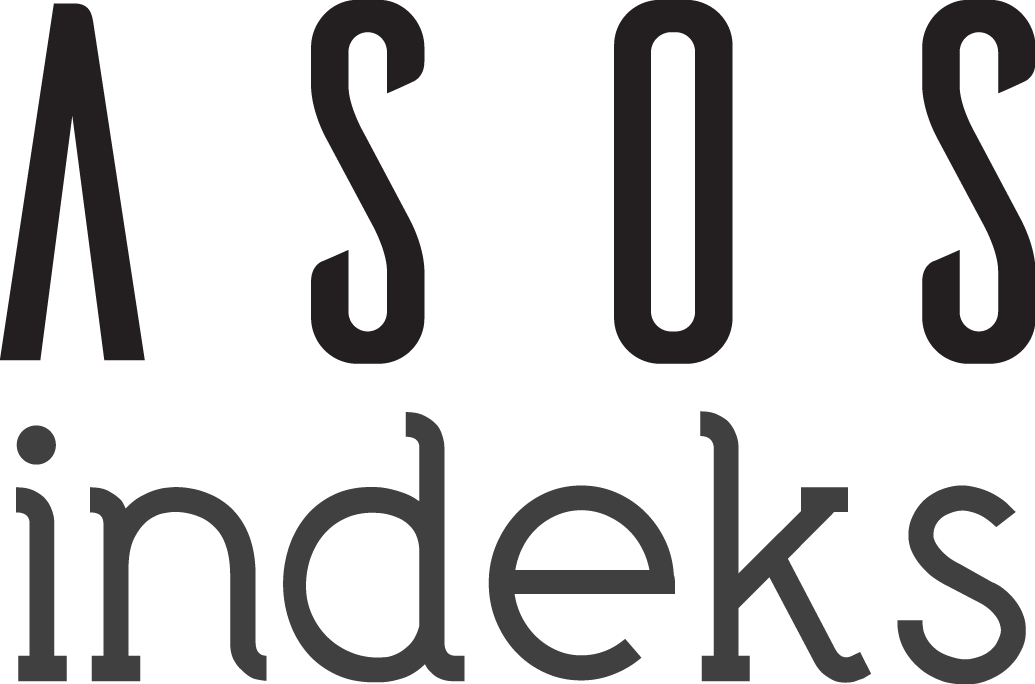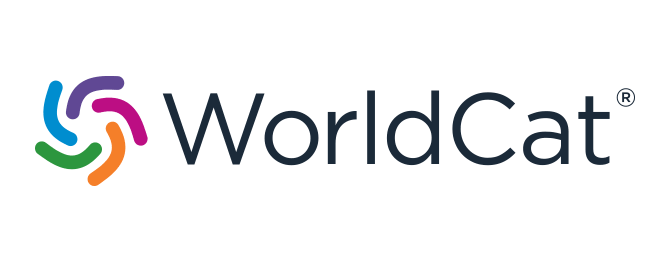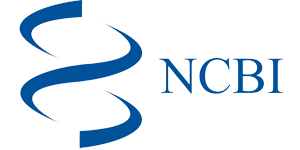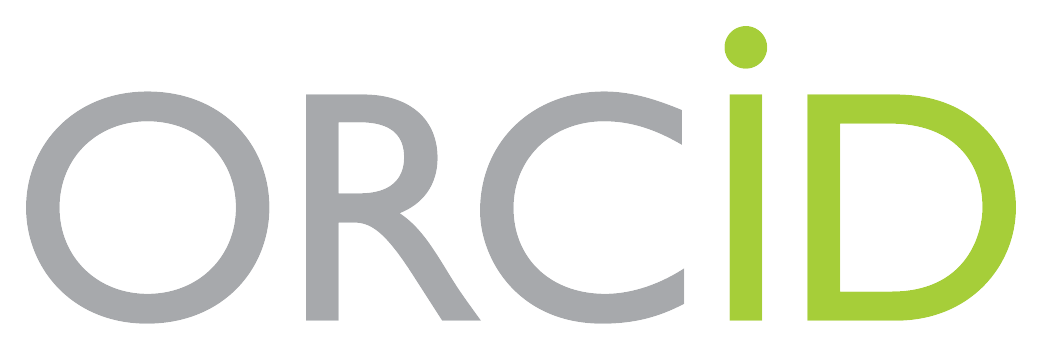Evaluation of mood disorders in healthcare workers working in COVID-19 services/polyclinics and their first-degree relatives
Abstract
Aims: The COVID-19 pandemic has impacted the entire world; however, certain individuals and groups have been affected more significantly or are at a higher risk. Among these groups are medical workers, who face unique challenges. In addition to the physical consequences of the pandemic, there have been notable psychological effects. This study aims to examine the prevalence of emotional disorders in healthcare personnel working in COVID-19 services and polyclinics, as well as in their first-degree relatives.
Methods: This study was conducted in 2022 on COVID-19 Service Personnel at Ufuk University Hospital and their firstdegree relatives. It included doctors, nurses, and auxiliary medical personnel who worked in either COVID-19 services or polyclinics, along with their non-medical first-degree relatives. In total, 375 participants were surveyed. The survey consisted of three sections: socio-demographic information, the short symptom inventory, and the short form for Burnout scale. The Mann-Whitney U test and the Kruskal-Wallis test were utilized for data analysis, with a p-value of <0.05 considered statistically significant.
Results: The scores for somatization, obsessive-compulsive symptoms (OCS), interpersonal sensitivity (IS), depression, anxiety, hostility, phobic anxiety (PA), paranoid ideation (PI), psychoticism, additional items (AI), sum of symptoms (SS), discomfort severity index (DSI), symptom discomfort index (SDI), and Burnout Scale were significantly higher among doctors compared to other groups. Auxiliary medical workers had the second highest scores, followed by nurses, while the non-medical control group had significantly lower scores than all medical personnel groups. It was observed that psychiatric symptoms and burnout were significantly higher among medical workers at all levels compared to their relatives in other professions.
Conclusion: Our study concludes that the pandemic has psychologically affected medical workers more than individuals in other professions, with doctors being the most affected group.
Keywords
References
- COVID-19 Hastalığı ile mücadelede “sağlik çalişanlarinin sağliği”. https://korona.hasuder.org.tr/covid-19-hastaligi-ile-mucadelede-saglik-calisanlarinin-sagligi/ access date 22.04.2022.
- Brooks SK, Webster RK, Smith LE, et al. The psychological impact of quarantine and how to reduce it: rapid review of the evidence. Lancet. 2020;395(10227):912-920. doi:10.1016/S0140-6736(20)30460-8
- Salari N, Hosseinian-Far A, Jalali R, et al. Prevalence of stress, anxiety, depression among the general population during the COVID-19 pandemic: a systematic review and meta-analysis. Global Health. 2020; 16(1):57. doi:10.1186/s12992-020-00589-w
- Killgore WDS, Cloonan SA, Taylor EC, Fernandez F, Grandner MA, Dailey NS. Suicidal ideation during the COVID-19 pandemic: the role of insomnia. Psychiatry Res. 2020;290:113134. doi:10.1016/j.psychres. 2020.113134
- Yüncü V, Yılan Y. COVID-19 pandemisinin sağlık çalışanlarına etkilerinin incelenmesi: bir durum analizi. Igdir University Journal of Social Sciences. 2020;373-402.
- Global: Amnesty analysis reveals over 7.000 health workers have died from COVID-19. https://www.amnesty.org/en/latest/press-release/2020/09/amnesty-analysis-7000-health-workers-have-died-from-covid19/ access date 21.02.2022
- Wang C, Pan R, Wan X, et al. Immediate psychological responses and associated factors during the initial stage of the 2019 Coronavirus disease (COVID-19) epidemic among the general population in China. Int J Environ Res Public Health. 2020;17(5):1729. doi:10.3390/ijerph 17051729
- Gökçe T, Dündar C. Samsun Ruh ve Sinir Hastalıkları Hastanesi’nde çalışan hekim ve hemşirelerde şiddete maruziyet sıklığı ve kaygı düzeylerine etkisi. J Turgut Ozal Med Cent. 2008;15(1):25-28.
- Bai Y, Lin CC, Lin CY, Chen JY, Chue CM, Chou P. Survey of stress reactions among health care workers involved with the SARS outbreak. Psychiatr Serv. 2004;55(9):1055-1057. doi:10.1176/appi.ps.55.9.1055
- Derogatis LR. BSI, 18, Brief symptom inventory 18: administration, scoring and procedures manual. Minneapolis, MN: NCS Pearson; 2001.
- Şahin NH, Durak Batıgün A, Uğurtaş S. Kısa semptom envanteri (KSE): ergenler için kullanımının geçerlik, güvenilirlik ve faktör yapısı. Turk Psikiyatri Derg. 2002;13(2):125-135.
- Çapri B. Tükenmişlik ölçeği-kısa formu ile eş tükenmişlik ölçeği-kısa formunun Türkçe uyarlaması ve psikoanalitik-varoluşçu bakış açısından mesleki ve eş tükenmişlik ilişkisi. Educational Sciences Theory Practice. 2013;13(3):1393-418.
- Santarone K, McKenney M, Elkbuli A. Preserving mental health and resilience in frontline healthcare workers during COVID-19. Am J Emerg Med. 2020;38(7):1530-1531. doi:10.1016/j.ajem.2020.04.030
- Mete B, Kartal F, Dönmez E, Acar O. The evaluation of general psychiatric symptoms of medical staffs in the COVID-19 pandemic in Turkey. Medicine. 2021;10(2):409-415. doi:10.5455/medscience.2020.12.252
- Kang L, Ma S, Chen M, et al. Impact on mental health and perceptions of psychological care among medical and nursing staff in Wuhan during the 2019 novel coronavirus disease outbreak: a cross-sectional study. Brain Behav Immun. 2020;87:11-17. doi:10.1016/j.bbi.2020.03.028
- Lai J, Ma S, Wang Y, et al. Factors associated with mental health outcomes among health care workers exposed to coronavirus disease 2019. JAMA Netw Open. 2020;3(3):e203976. doi:10.1001/jamanetworkopen.2020.3976
- Li Z, Ge J, Yang M, et al. Vicarious traumatization in the general public, members, and non-members of medical teams aiding in COVID-19 control. Brain Behav Immun. 2020;88:916-919. doi:10.1016/j.bbi.2020. 03.007
- Zhang WR, Wang K, Yin L, et al. Mental health and psychosocial problems of medical health workers during the COVID-19 epidemic in China. Psychother Psychosom. 2020;89(4):242-250. doi:10.1159/000507639
- Tan BYQ, Chew NWS, Lee GKH, et al. Psychological impact of the COVID-19 pandemic on health care workers in Singapore. Ann Intern Med. 2020;173(4):317-320. doi:10.7326/M20-1083
- Spoorthy MS, Pratapa SK, Mahant S. Mental health problems faced by healthcare workers due to the COVID-19 pandemic-a review. Asian J Psychiatr. 2020;51:102119. doi:10.1016/j.ajp.2020.102119
- Nickell LA, Crighton EJ, Tracy CS, et al. Psychosocial effects of SARS on hospital staff: survey of a large tertiary care institution. CMAJ. 2004; 170(5):793-798. doi:10.1503/cmaj.1031077
- Huang JZ, Han MF, Luo TD, Ren AK, Zhou XP. Mental health survey of medical staff in a tertiary infectious disease hospital for COVID-19. Zhonghua Lao Dong Wei Sheng Zhi Ye Bing Za Zhi. 2020;38(3):192-195. doi:10.3760/cma.j.cn121094-20200219-00063
- Elbay RY, Kurtulmuş A, Arpacıoğlu S, Karadere E. Depression, anxiety, stress levels of physicians and associated factors in COVID-19 pandemics. Psychiatry Res. 2020;290:113130. doi:10.1016/j.psychres.2020.113130
- Bose A. Mental health impacts of COVID-19 in health care workers and coping strategies. IJNRP. 2020;7(1):1-3. doi:10.15509/IJNRP.2020.7.1.373
Covid-19 serviste/poliklinikte çalışan sağlık çalışanlarının ve birinci derece yakınlarının duygu durum bozukluğunun değerlendirilmesi
Abstract
Amaç: COVID-19 pandemisi bütün dünyayı etkilenmesine rağmen bazı kişi ve gruplar daha fazla etkilenmiştir veya bu grupların etkilenme riski daha fazladır. Riski yüksek grupların en başlarında sağlık çalışanları gelmektedir. Pandeminin fiziksel sonuçlarının yanında psikolojik sonuçları da olmuştur. Bu çalışma ile bir hastanenin Covid-19 servis ve poliklinikte çalışan sağlık çalışanlarının ve birinci derece yakınlarında duygu durum bozukluğu sıklığının incelenmesi amaçlanmıştır.
Yöntem: Bu çalışma XXX Üniversitesi Hastanesinde 2021 yılında COVID-19 servis ve poliklinikte çalışan sağlık çalışanları ve her bir çalışanın birinci derece yakını üstünde yapılmıştır. Bu çalışmada XXX Üniversitesi’nde Covid-19 servis veya poliklinikte çalışmış olan doktor, hemşire ve yardımcı sağlık personelleri ile her sağlık personelinin sağlık personeli olmayan 1. derece yakını çalışmaya dahil edilmiştir. 375 kişiye ulaşılmıştır. Katılımcılara uygulanan form üç bölümden oluşmaktadır. Sosyo-demografik bölüm, Kısa Semptom Envanteri ve Tükenmişlik Ölçeği Kısa Formudur. Analizlerde Mann Whitney U testi, Kruskal Wallis testi kullanılmıştır. p<0.05 değeri istatistiksel olarak önemli kabul edilmiştir.
Bulgular: Hekimlerde somatizasyon, OKB, Kişilerarası Duyarlılık, Depresyon, Anksiyete, Hostilite, Fobik Anksiyete, Paranoid Düşünce, Psikotizm, Ek Maddeler (yeme içme bozuklukları, uyku bozuklukları, ölüm ve ölüm üzerine düşünceler ve suçluluk duyguları), Belirti Toplamı, DSI, SDI, Tükenmişlik ölçeği puanlarının diğer gruplara göre önemli düzeyde yüksek olduğu, ikinci en yüksek puanların yardımcı sağlık personelinde, üçüncü yüksek puanların ise hemşirelerde olduğu bulunmuştur. Sağlık personeli olmayan kontrol grubunun puanlarının bütün sağlık personeli gruplarından anlamlı olarak daha düşük olduğu bulunmuştur. Her kademe ve aşamadaki sağlık çalışanın psikiyatrik semptomlarının ve tükenmişliğinin diğer mesleklerde çalışan birinci derece yakınlarından önemli düzeyde fazla olduğu görülmektedir. Sağlık çalışanlarının semptom ve tükenmişliğini etkileyen faktörler incelendiğinde ise çalışma biriminin özellikle serviste çalışmanın, meslek yılının ve bekar olmanın sağlık çalışanlarında psikiyatrik semptomlar ve tükenmişlikte önemli olduğu bulunmuştur.
Sonuç: Çalışmamızın sonucuna göre pandeminin diğer meslek grupları ile karşılaştırıldığında sağlık çalışanlarını psikolojik açıdan daha çok etkilediği, en çok etkilenen grubun hekimler olduğu bulunmuştur.
Keywords
References
- COVID-19 Hastalığı ile mücadelede “sağlik çalişanlarinin sağliği”. https://korona.hasuder.org.tr/covid-19-hastaligi-ile-mucadelede-saglik-calisanlarinin-sagligi/ access date 22.04.2022.
- Brooks SK, Webster RK, Smith LE, et al. The psychological impact of quarantine and how to reduce it: rapid review of the evidence. Lancet. 2020;395(10227):912-920. doi:10.1016/S0140-6736(20)30460-8
- Salari N, Hosseinian-Far A, Jalali R, et al. Prevalence of stress, anxiety, depression among the general population during the COVID-19 pandemic: a systematic review and meta-analysis. Global Health. 2020; 16(1):57. doi:10.1186/s12992-020-00589-w
- Killgore WDS, Cloonan SA, Taylor EC, Fernandez F, Grandner MA, Dailey NS. Suicidal ideation during the COVID-19 pandemic: the role of insomnia. Psychiatry Res. 2020;290:113134. doi:10.1016/j.psychres. 2020.113134
- Yüncü V, Yılan Y. COVID-19 pandemisinin sağlık çalışanlarına etkilerinin incelenmesi: bir durum analizi. Igdir University Journal of Social Sciences. 2020;373-402.
- Global: Amnesty analysis reveals over 7.000 health workers have died from COVID-19. https://www.amnesty.org/en/latest/press-release/2020/09/amnesty-analysis-7000-health-workers-have-died-from-covid19/ access date 21.02.2022
- Wang C, Pan R, Wan X, et al. Immediate psychological responses and associated factors during the initial stage of the 2019 Coronavirus disease (COVID-19) epidemic among the general population in China. Int J Environ Res Public Health. 2020;17(5):1729. doi:10.3390/ijerph 17051729
- Gökçe T, Dündar C. Samsun Ruh ve Sinir Hastalıkları Hastanesi’nde çalışan hekim ve hemşirelerde şiddete maruziyet sıklığı ve kaygı düzeylerine etkisi. J Turgut Ozal Med Cent. 2008;15(1):25-28.
- Bai Y, Lin CC, Lin CY, Chen JY, Chue CM, Chou P. Survey of stress reactions among health care workers involved with the SARS outbreak. Psychiatr Serv. 2004;55(9):1055-1057. doi:10.1176/appi.ps.55.9.1055
- Derogatis LR. BSI, 18, Brief symptom inventory 18: administration, scoring and procedures manual. Minneapolis, MN: NCS Pearson; 2001.
- Şahin NH, Durak Batıgün A, Uğurtaş S. Kısa semptom envanteri (KSE): ergenler için kullanımının geçerlik, güvenilirlik ve faktör yapısı. Turk Psikiyatri Derg. 2002;13(2):125-135.
- Çapri B. Tükenmişlik ölçeği-kısa formu ile eş tükenmişlik ölçeği-kısa formunun Türkçe uyarlaması ve psikoanalitik-varoluşçu bakış açısından mesleki ve eş tükenmişlik ilişkisi. Educational Sciences Theory Practice. 2013;13(3):1393-418.
- Santarone K, McKenney M, Elkbuli A. Preserving mental health and resilience in frontline healthcare workers during COVID-19. Am J Emerg Med. 2020;38(7):1530-1531. doi:10.1016/j.ajem.2020.04.030
- Mete B, Kartal F, Dönmez E, Acar O. The evaluation of general psychiatric symptoms of medical staffs in the COVID-19 pandemic in Turkey. Medicine. 2021;10(2):409-415. doi:10.5455/medscience.2020.12.252
- Kang L, Ma S, Chen M, et al. Impact on mental health and perceptions of psychological care among medical and nursing staff in Wuhan during the 2019 novel coronavirus disease outbreak: a cross-sectional study. Brain Behav Immun. 2020;87:11-17. doi:10.1016/j.bbi.2020.03.028
- Lai J, Ma S, Wang Y, et al. Factors associated with mental health outcomes among health care workers exposed to coronavirus disease 2019. JAMA Netw Open. 2020;3(3):e203976. doi:10.1001/jamanetworkopen.2020.3976
- Li Z, Ge J, Yang M, et al. Vicarious traumatization in the general public, members, and non-members of medical teams aiding in COVID-19 control. Brain Behav Immun. 2020;88:916-919. doi:10.1016/j.bbi.2020. 03.007
- Zhang WR, Wang K, Yin L, et al. Mental health and psychosocial problems of medical health workers during the COVID-19 epidemic in China. Psychother Psychosom. 2020;89(4):242-250. doi:10.1159/000507639
- Tan BYQ, Chew NWS, Lee GKH, et al. Psychological impact of the COVID-19 pandemic on health care workers in Singapore. Ann Intern Med. 2020;173(4):317-320. doi:10.7326/M20-1083
- Spoorthy MS, Pratapa SK, Mahant S. Mental health problems faced by healthcare workers due to the COVID-19 pandemic-a review. Asian J Psychiatr. 2020;51:102119. doi:10.1016/j.ajp.2020.102119
- Nickell LA, Crighton EJ, Tracy CS, et al. Psychosocial effects of SARS on hospital staff: survey of a large tertiary care institution. CMAJ. 2004; 170(5):793-798. doi:10.1503/cmaj.1031077
- Huang JZ, Han MF, Luo TD, Ren AK, Zhou XP. Mental health survey of medical staff in a tertiary infectious disease hospital for COVID-19. Zhonghua Lao Dong Wei Sheng Zhi Ye Bing Za Zhi. 2020;38(3):192-195. doi:10.3760/cma.j.cn121094-20200219-00063
- Elbay RY, Kurtulmuş A, Arpacıoğlu S, Karadere E. Depression, anxiety, stress levels of physicians and associated factors in COVID-19 pandemics. Psychiatry Res. 2020;290:113130. doi:10.1016/j.psychres.2020.113130
- Bose A. Mental health impacts of COVID-19 in health care workers and coping strategies. IJNRP. 2020;7(1):1-3. doi:10.15509/IJNRP.2020.7.1.373
Details
| Primary Language | English |
|---|---|
| Subjects | Emergency Medicine, Stress |
| Journal Section | Research Articles |
| Authors | |
| Publication Date | May 30, 2025 |
| Submission Date | March 6, 2025 |
| Acceptance Date | March 26, 2025 |
| Published in Issue | Year 2025 Volume: 7 Issue: 3 |
TR DİZİN ULAKBİM and International Indexes (1b)
Interuniversity Board (UAK) Equivalency: Article published in Ulakbim TR Index journal [10 POINTS], and Article published in other (excuding 1a, b, c) international indexed journal (1d) [5 POINTS]
Note: Our journal is not WOS indexed and therefore is not classified as Q.
You can download Council of Higher Education (CoHG) [Yüksek Öğretim Kurumu (YÖK)] Criteria) decisions about predatory/questionable journals and the author's clarification text and journal charge policy from your browser. https://dergipark.org.tr/tr/journal/3449/file/4924/show
Journal Indexes and Platforms:
TR Dizin ULAKBİM, Google Scholar, Crossref, Worldcat (OCLC), DRJI, EuroPub, OpenAIRE, Turkiye Citation Index, Turk Medline, ROAD, ICI World of Journal's, Index Copernicus, ASOS Index, General Impact Factor, Scilit.The indexes of the journal's are;
The platforms of the journal's are;
|
The indexes/platforms of the journal are;
TR Dizin Ulakbim, Crossref (DOI), Google Scholar, EuroPub, Directory of Research Journal İndexing (DRJI), Worldcat (OCLC), OpenAIRE, ASOS Index, ROAD, Turkiye Citation Index, ICI World of Journal's, Index Copernicus, Turk Medline, General Impact Factor, Scilit
Journal articles are evaluated as "Double-Blind Peer Review"
All articles published in this journal are licensed under a Creative Commons Attribution 4.0 International License (CC BY 4.0)














